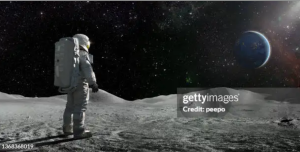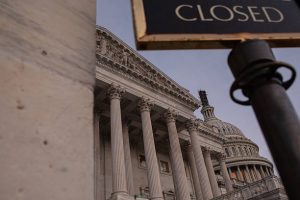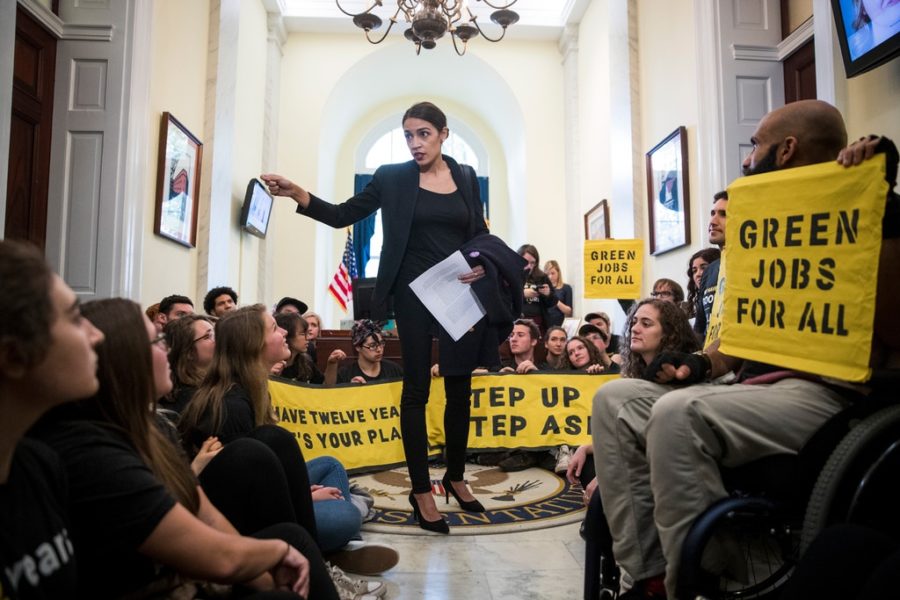What Does the Green New Deal Mean?
March 5, 2019
“Decarbonization, jobs, and justice.” These are just a few of the key topics that Democrats are aiming to achieve with this new bill. After the November elections of 2018, ‘Green New Deal’ was proposed for the public to take into consideration. At the forefront of the proposal is Alexandria Ocasio-Cortez, U.S. Representative for New York’s 14th congressional district, who has been vocal about her opinion of the subject of climate change, and what the ‘Green New Deal’ can do to combat the damage already done. “The world is going to end in 12 years if we don’t address climate change.”
This has sparked controversy within not only the United States, but globally. China, United States, and European Nations contribute the most to climate change – emitting the most damaging emissions. The Green New Deal could help extend the life of the planet, and bring life back into the habitats. It aims to completely change the outlook on clean energy and carbonize the economy. Once the corporations that contribute to releasing harmful emissions hopefully make changes to covert to clean energy, then those simple changes could make major improvements.
Although the GND was proposed last elections, it isn’t a new concept. Similar proposals were made in the late 2000’s, but mostly it’s a version of President Franklin D. Roosevelt’s ‘New Deal’ – which was created to restore prosperity to Americans, and this was used to provide more jobs, and to stabilize the economy.
From the Washington Post, these are the primary goals for the ‘Green New Deal’ ->
- – “Guaranteeing a job with a family-sustaining wage, adequate family and medical leave, paid vacations, and retirement security to all people of the United States.”
- – “Providing all people of the United States with — (i) high-quality health care; (ii) affordable, safe, and adequate housing; (iii) economic security; and (iv) access to clean water, clean air, healthy and affordable food, and nature.”
- – “Providing resources, training, and high-quality education, including higher education, to all people of the United States.”
- – “Meeting 100 percent of the power demand in the United States through clean, renewable, and zero-emission energy sources.”
- – “Repairing and upgrading the infrastructure in the United States, including . . . by eliminating pollution and greenhouse gas emissions as much as technologically feasible.”
- – “Building or upgrading to energy-efficient, distributed, and ‘smart’ power grids, and working to ensure affordable access to electricity.”
- – “Upgrading all existing buildings in the United States and building new buildings to achieve maximal energy efficiency, water efficiency, safety, affordability, comfort, and durability, including through electrification.”
- – “Overhauling transportation systems in the United States to eliminate pollution and greenhouse gas emissions from the transportation sector as much as is technologically feasible, including through investment in — (i) zero-emission vehicle infrastructure and manufacturing; (ii) clean, affordable, and accessible public transportation; and (iii) high-speed rail.”
- – “Spurring massive growth in clean manufacturing in the United States and removing pollution and greenhouse gas emissions from manufacturing and industry as much as is technologically feasible.”
- – “Working collaboratively with farmers and ranchers in the United States to eliminate pollution and greenhouse gas emissions from the agricultural sector as much as is technologically feasible.”
Whether or not the GND will be put into place, it’s a start to combating climate change, because it is undeniably becoming more and more prevalent. Regardless, this will keep climate change + global warming in the mix when it comes to hot topics, which is what the general public can only hope for.












